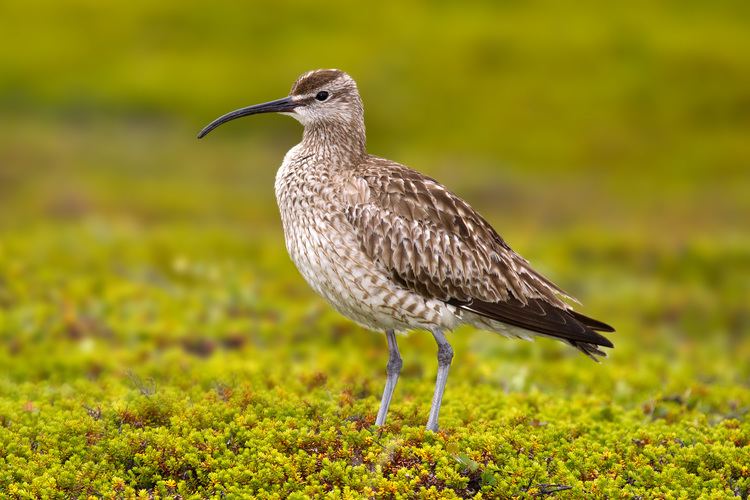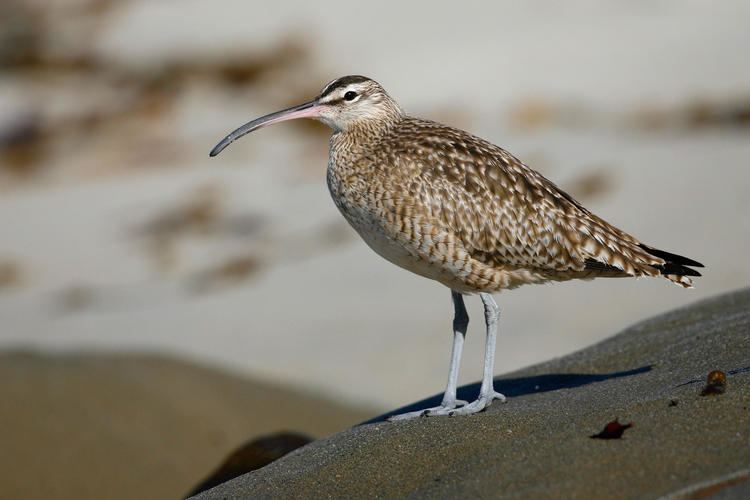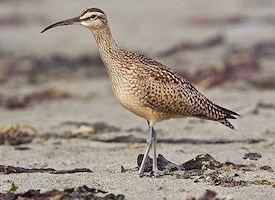Kingdom Animalia Order Charadriiformes Genus Numenius Rank Species | Phylum Chordata Family Scolopacidae Scientific name Numenius phaeopus Higher classification Curlew | |
 | ||
Similar Bird, Curlew, Common redshank, Common greenshank, Sanderling | ||
Bto bird id curlew and whimbrel
The whimbrel (Numenius phaeopus) is a wader in the large family Scolopacidae. It is one of the most widespread of the curlews, breeding across much of subarctic North America, Europe and Asia as far south as Scotland.
Contents
This is a migratory species wintering on coasts in Africa, South America, south Asia into Australasia and southern North America. It is also a coastal bird during migration. It is fairly gregarious outside the breeding season.

Whimbrel
Description

This is a fairly large wader though mid-sized as a member of the curlew genus. The English name is imitative of the bird's call. The genus name Numenius is from Ancient Greek noumenios, a bird mentioned by Hesychius. It is associated with the curlews because it appears to be derived from neos, "new" and mene "moon", referring to the crescent-shaped bill. The species name phaeopus is the Medieval Latin name for the bird, from Ancient Greek phaios, "dusky" and pous, "foot".

It is 37–47 cm (15–19 in) in length, 75–90 cm (30–35 in) in wingspan, and 270–493 g (9.5–17.4 oz) in weight. It is mainly greyish brown, with a white back and rump (subspecies N. p. phaeopus and N. p. alboaxillaris only), and a long curved bill (longest in the adult female) with a kink rather than a smooth curve. It is generally wary.
The usual call is a rippling whistle, prolonged into a trill for the song.

The only similar common species over most of this bird's range are larger curlews. The whimbrel is smaller, has a shorter, decurved bill and has a central crown stripe and strong supercilia.
Subspecies
There are seven subspecies:

Ecology
This species feeds by probing soft mud for small invertebrates and by picking small crabs and similar prey off the surface. Before migration, berries become an important part of their diet. It has also been observed taking insects, specifically blue tiger butterflies.
The nest is a bare scrape on tundra or Arctic moorland. Three to five eggs are laid. Adults are very defensive of nesting area and will even attack humans who come too close.
Near the end of the 19th century, hunting on their migration routes took a heavy toll on this bird's numbers; the population has since recovered.
In the British Isles, it breeds in Scotland, particularly around Shetland, Orkney, the Outer Hebrides as well as the mainland at Sutherland and Caithness.
The whimbrel is one of the species to which the Agreement on the Conservation of African-Eurasian Migratory Waterbirds (AEWA) applies.
